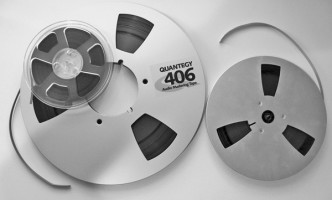Compression is one of the oldest and most used hardware units in recording. These days compression comes in many forms; the software plug-ins have gotten better as computing has gotten faster, so it’s possible to get very close to the sound of the older hardware brothers. The plug-ins come with many options and, of course, the beauty of being able to automate every parameter of the compressor. The audio compressor is usually something that should be employed to control the dynamics of a piece, unless the desired effect is to “pump” the compressor. Understanding the characteristics of the different types of compressors and their sounds will help you make quick and effective choices in the moment.
Most compressors will come with common setting choices.
Threshold – is the point at which the compressor will begin to take effect; of course, the attack will directly affect the amount of time that passes before the compressor works. The lower the threshold is turned down, the more compression that will take place. This measurement is usually shown in dB.
Attack – will control the amount of time from when threshold is reached/crossed to when the compressor will start to kick into effect. This is usually measured in milliseconds
Release – is the amount of time after the threshold is passed until compressor is no longer affecting the audio. This is usually measured in milliseconds, as well.
Knee – will control how the audio will transition from uncompressed to compressed. A “hard” knee will be a sharp angle in which the compression starts. A “soft” knee will add a more gentle angle, from compressed to uncompressed. If you’re only investing in one compressor as a utility or a do-it-all compressor, this can help when switching between sources such as vocals and drums. Controlling how the knee will react can help in making sure that desired results are achieved.
Ratio – will control the type of knee and how hard the compressor will squeeze the audio once it is being compressed. Some compressors will act as a limiter; when setting the ratio to its highest point, the compressor will work at a 20:1 ratio, which will have it functioning in a limiting mode.
Sidechain –will provide a way to control the compressor from another audio source. The level of the external source will control how hard the compressor will clench down on the audio. This can be beneficial when in mix mode to add a little cohesiveness between the kick and bass, for example. A compressor will sometimes have EQ controls in the sidechain, which is useful when working with audio that has a specific frequency spectrum.
Link – most of the time, a stereo compressor will work in multi-mono mode or stereo if this is engaged. Multi-mono is a nice function if the compressor is stereo, as it will allow for each of the compressors to be used on separate sources in those bigger tracking sessions or during mixing.
Makeup Gain – controls how much gain will be added at the output of the compressor. “Auto” makeup gain will make sure the compressed audio leaves the compressor at the same level that it entered.
Metering – most compressors will allow for the metering of the audio at different points throughout. The metering options are input, output, and gain reduction. If the compressor doesn’t have an auto function, gain reduction will show the amount of gain that needs to be added back to the signal to have the same level at the output.
Depending on the situation and the desired result, compressors can be used in a variety of ways. Using it as protection to wild dynamics can be useful in tracking situations. Compressors are usually best when used in small increments at different stages, rather than a lot at once, as this will help in making sure not to completely kill the dynamics of the audio source. Each type of compressor and each manufacturer will have their own sound and will handle the audio in different ways; so taking some time to learn the different types of compressors will be beneficial in the long run. Parallel compression is a technique that is usually used during the mix mode of a project. For example, figure that a stereo aux send is being used to bus the drums to stereo channel. On the stereo channel, add a compressor and set to desired taste and mix back in with the drums. Compressor tricks and opportunities are endless, so if time allows, experiment with different types and settings to return some interesting results.
And remember, when using compression (or any rack gear), oftentimes less is more. Avoiding too much compression will help control the audio while still allowing the dynamics to breathe. It’s very easy to lose some of your dynamics, so exercise caution and use compression judiciously.
-Dustin Lefholz is a professional audio engineer. He has certification with a variety of consoles and DAW systems including SSL, Neve, Amek, Trident and Pro Tools. Lefholz has over 170 album credits to his name, including tracking, mixing and mastering.

